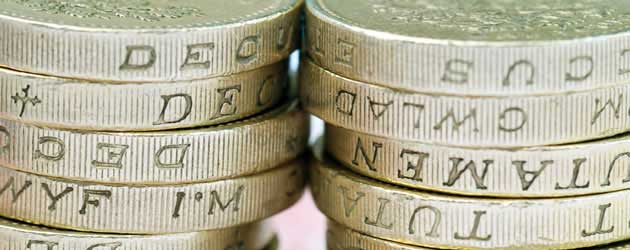
The Pound to US Dollar exchange rate (GBP/USD) remained below key psychological resistance at 1.70 for the majority of yesterday’s session.
Sterling fell through psychological support at 1.7000 last Thursday when data showed that British retail sales only accelerated by 0.1% last month, disappointing expectations of 0.3%.
The Pound struggled on Friday despite a report indicating that the British economy grew by 0.8% in the second quarter, thus bringing UK GDP back above its pre-crisis peak. It seems that traders turned bearish on GBP/USD last week in a sign that markets expect the Bank of England to raise interest rates only slightly earlier than the Federal Reserve.
Fed rate hike bets increased yesterday when Markit Economics reported that US service sector activity printed at a joint 4.5-year high in July. The robust 61.0 services print massively outperformed investors’ forecasts of 59.8.
Data today is predicted to show that British mortgage approvals grew from 61,700 to 63,000 in June. If that proves to be the case then demand for the Pound could increase. However, GBP/USD could struggle later on in the week if important US data prints positively.
Wednesday afternoon’s second quarter US GDP print is forecast to show that the world’s largest economy rebounded from Q1’s steep -2.9% contraction with a bulky 3.0% expansion in the second three months of the year.
The good news for the ‘Greenback’ is likely to continue in the evening when the Fed is predicted to cut its QE3 asset programme by a further -$10 billion to just $25 billion per month.
And there is potential for further US Dollar gains on Friday if July’s non-farm payroll report impresses. A score of 231,000 is expected but anything above 250,000 is likely to bolster demand for the ‘Greenback’.
A perfect storm of rising GDP output, tapering of Fed stimulus and strong jobs growth could provide the backdrop for further rate hike speculation this week. 1.6900 and 1.6830 are the next GBP/USD technical support levels that could be breached if US data is seen to reduce the timespan between the Bank of England’s and the Federal Reserve’s first interest rate hikes.
The BoE is currently expected to start raising rates in either the final quarter of this year or the first quarter of next, depending on how quickly average weekly earnings start to accelerate faster than inflation.
The Fed is unlikely to start raising rates before this time next year, but recent comments from Fed President Janet Yellen have boosted expectations of Fed tightening and raised the prospect of a weaker Pound to US Dollar exchange rate.

Comments are closed.